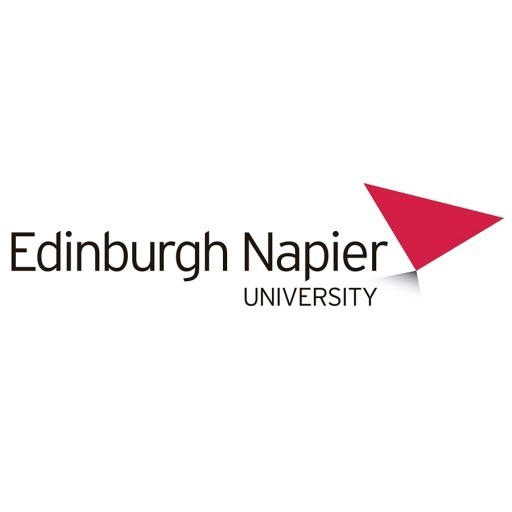Photos of university / #dundeeuni
Digital Interaction Design at the University of Dundee is a dynamic and innovative programme that prepares students to thrive in the rapidly evolving digital landscape. This comprehensive course combines principles of design, technology, and user experience to equip graduates with the skills necessary to create engaging, intuitive, and effective digital interfaces and interactive media. Through a blend of theoretical knowledge and practical application, students learn to analyse user needs, design compelling digital experiences, and develop interactive prototypes across a variety of platforms including web, mobile, and emerging technologies. The programme emphasizes creativity, problem-solving, and technical proficiency, ensuring students are well-versed in current industry tools and techniques. Students have the opportunity to work on real-world projects, collaborate with industry partners, and participate in internships that provide valuable professional experience. The curriculum covers areas such as user-centered design, human-computer interaction, multimedia production, visual communication, and digital storytelling. With a strong focus on innovation and user engagement, the course fosters critical thinking and encourages students to explore new digital trends such as virtual reality, augmented reality, and wearable technology. The University of Dundee’s vibrant learning environment, supported by experienced faculty and state-of-the-art facilities, ensures that graduates are equipped with a competitive edge in the digital design industry. Upon completing the programme, students are prepared for careers in UX/UI design, digital media, interactive product development, and other areas where digital interaction skills are essential. This programme is ideal for creative individuals who are passionate about technology and eager to influence how people interact with digital content in meaningful and impactful ways.
Foundation Year / Year 1
The Digital Interaction Design program at the University of Dundee begins with a foundational year dedicated to equipping students with essential skills in digital technology, design principles, and creative problem-solving. During this initial phase, students develop a strong understanding of the fundamentals of computing, user-centered design, and digital media. They are introduced to core concepts such as visual communication, interface design, and interactive media, laying the groundwork for more specialized study. The curriculum emphasizes hands-on learning through practical projects, workshops, and collaborative assignments, enabling students to apply theoretical knowledge in real-world contexts. This year also fosters critical thinking and creativity, encouraging students to explore the potentials of digital interaction and innovation, setting the stage for advanced study in subsequent years.
Year 2
In the second year, students delve deeper into the principles and practices of digital interaction design. The focus expands to include advanced topics such as human-computer interaction, usability testing, and user experience (UX) design. Students undertake project-based coursework that challenges them to create intuitive, accessible, and engaging digital interfaces. They learn to utilize industry-standard tools and software for prototyping, wireframing, and visual design. The program emphasizes the importance of user research, data analysis, and iterative design processes, enabling students to develop digital products that meet user needs effectively. Collaboration and teamwork are integral components of this stage, providing valuable experience in working within multidisciplinary teams and preparing students for professional environments.
Year 3
The final year consolidates students' knowledge and skills through advanced modules and a significant final project. Students explore emerging trends in digital interaction, such as augmented reality, virtual reality, and Internet of Things (IoT) applications. The course encourages innovation and entrepreneurship, with opportunities for students to develop their own digital prototypes or start-up ideas. Industry engagement is a key element, with guest lectures, workshops, and potential placements with digital companies. Students apply research methods, design thinking, and technical skills to solve complex interaction challenges. The curriculum aims to produce graduates who are proficient in designing and developing user-centered digital solutions, ready to pursue careers in UX/UI design, digital media, or further academic research.
Overall
The Digital Interaction Design program at the University of Dundee offers a comprehensive education that balances theoretical understanding with practical application. It prepares students to become innovative designers and researchers who can shape the future of digital experiences. The program fosters a creative and collaborative environment, equipping graduates with the skills needed to excel in the evolving digital landscape. Upon completion, students are well-equipped to enter various industries ranging from technology and gaming to healthcare and education, influencing how people interact with digital systems worldwide.
The Digital Interaction Design program at the University of Dundee requires prospective students to demonstrate a strong interest in designing and developing user-centered digital experiences. Applicants are typically expected to have completed secondary education equivalent to UK A-levels or international qualifications with a good academic record. While specific subject prerequisites may not be explicitly specified, a background in art, design, computing, or related fields can be advantageous. The program values creativity, problem-solving abilities, and an aptitude for understanding user needs and behaviors.
International students are encouraged to meet the English language proficiency requirements, often through IELTS or similar tests, with minimum scores generally around 6.0 to 6.5 overall, with no component below 5.5 or 6.0. The selection process considers academic achievements, personal statements, and, where applicable, portfolios demonstrating relevant skills or previous work in digital design or interactive media.
Applicants are advised to prepare a personal statement explaining their interest in digital interaction design, their motivation for choosing the program, and any relevant experience, such as projects, coursework, or work experience in related fields. For those with a portfolio, it should showcase creativity, technical skills, and an understanding of user-centric design principles.
The program may also value interdisciplinary skills, including graphic design, programming, human-computer interaction, and multimedia production. Although prior programming experience is not strictly mandated, familiarity with coding languages such as HTML, CSS, JavaScript, or similar can enhance a student's ability to succeed in the coursework.
Work experience is not compulsory but can be beneficial and may be considered during the admission process. The program emphasizes practical, hands-on learning through collaborative projects, workshops, and real-world applications. Students are encouraged to develop a portfolio as part of their studies, which serves as an important element of their professional development.
Overall, the entry requirements aim to attract motivated, creative individuals with a passion for digital media, design, and interactive technology, preparing graduates for careers in user interface design, digital media development, and related fields.
The University of Dundee offers a range of financing options for students enrolled in the Digital Interaction Design program, ensuring that students have access to the financial support necessary to pursue their studies. Tuition fees for the program vary depending on the student’s residency status, with domestic students typically paying a different rate from international students. For the academic year 2023-2024, the approximate tuition fee for home students is around £9,250 per year, while international students may be charged approximately £18,000 per year. These fees are subject to annual review and could increase slightly in subsequent years.
Students are encouraged to explore various financing avenues, including government-funded student loans, scholarships, and bursaries. The UK government provides maintenance loans and tuition fee loans through the Student Loans Company, which can cover part or all of tuition and living expenses for eligible students. The University of Dundee offers several scholarship schemes and bursaries to assist students financially. For example, domestic students may be eligible for scholarships based on academic merit, extracurricular achievements, or financial need. International students can also apply for merit-based scholarships, which are awarded based on academic excellence or specialization in digital interaction design.
In addition to scholarships, students can seek external funding sources such as private grants, industry sponsorships, and international aid programs. The university provides comprehensive guidance and support through its Student Funding Office, which assists students with applications, eligibility assessments, and understanding repayment obligations. Payment plans are available to help spread the cost of tuition fees over the academic year, making the financial burden more manageable.
Living costs in Dundee are relatively affordable compared to other UK cities, with estimated expenses including accommodation, food, transportation, and personal items. Students are advised to budget accordingly and consider part-time employment opportunities both on and off campus, which are permissible under UK student visa regulations for international students.
Overall, the University of Dundee is committed to supporting its students through various financial aid programs, ensuring that financial circumstances do not hinder access to its Digital Interaction Design program. Prospective students should consult the university's official website and contact the Student Funding Office for the most current and detailed information regarding specific funding opportunities, application procedures, and deadlines.
Digital Interaction Design at the University of Dundee is a forward-thinking programme that prepares students to create innovative digital experiences through the integration of design, technology, and human-centred principles. The course is designed to equip learners with a comprehensive understanding of user interface design, user experience, and emerging digital trends. Students explore a range of topics including interactive media, visual communication, coding, and prototyping, enabling them to develop practical skills alongside theoretical knowledge. The programme emphasizes collaborative project work, encouraging students to address real-world challenges and work in multidisciplinary teams. In addition to technical proficiency, students are taught to consider the social and ethical implications of digital products, fostering responsible design practices. The curriculum often includes modules on usability testing, digital storytelling, mobile app development, and virtual reality, reflecting the diverse applications of digital interaction. Students have access to state-of-the-art facilities and software, supporting hands-on learning and creativity. Throughout their studies, they are encouraged to build a compelling portfolio that showcases their skills to potential employers. Graduates of Digital Interaction Design are well-positioned for careers in UX/UI design, digital product development, game design, and other sectors where innovative digital solutions are in demand. The university maintains strong links with industry partners, offering opportunities for internships, live project briefs, and networking events to enhance employment prospects. The course also aims to foster adaptability and lifelong learning, preparing students to stay abreast of rapid technological changes in the digital landscape. Overall, Digital Interaction Design at the University of Dundee is a comprehensive programme that supports students in becoming creative, skilled, and ethical digital designers.










